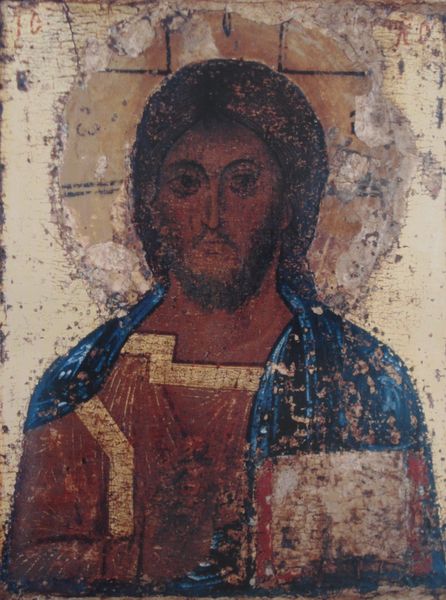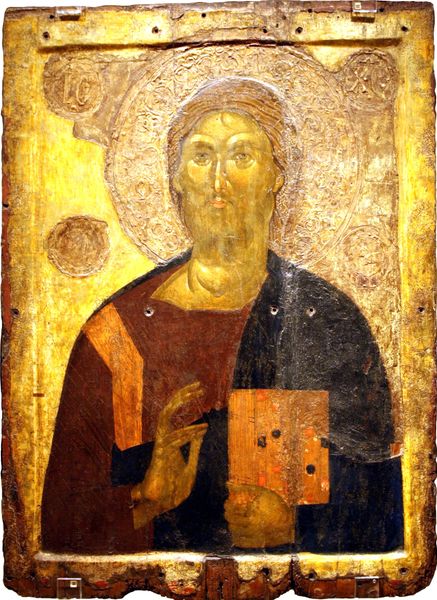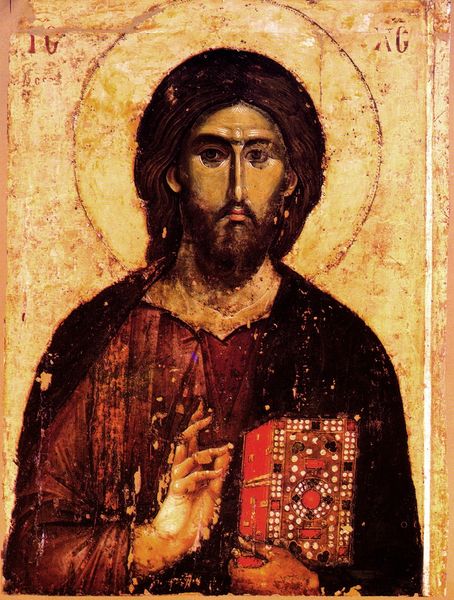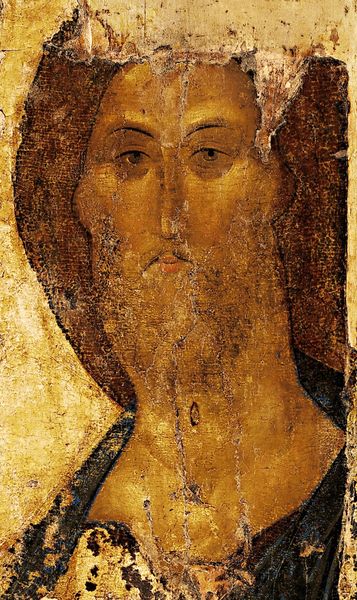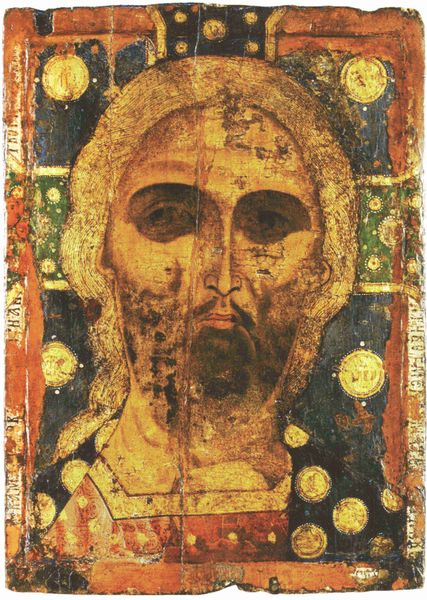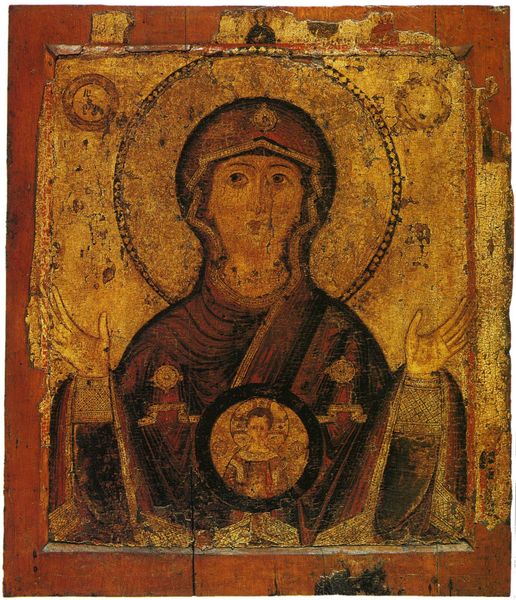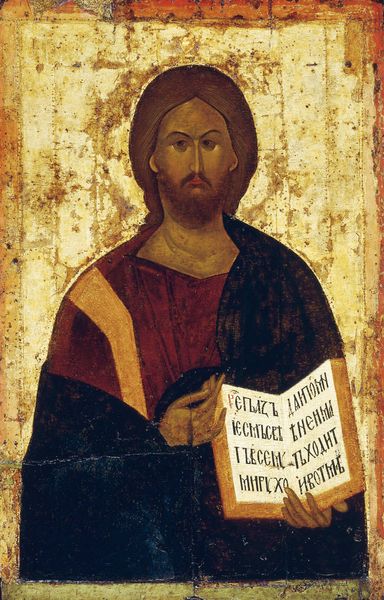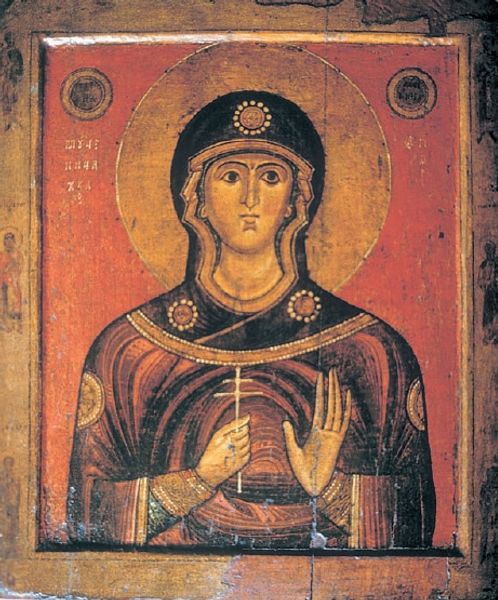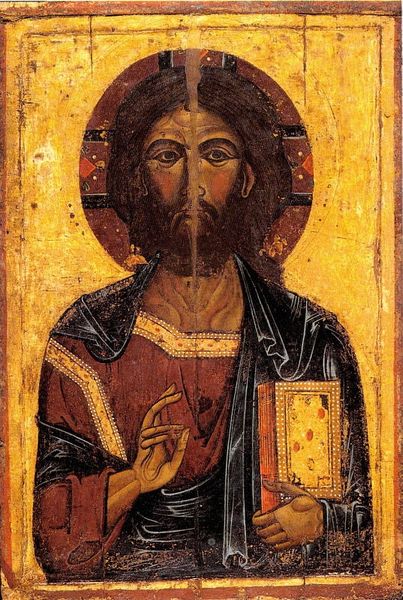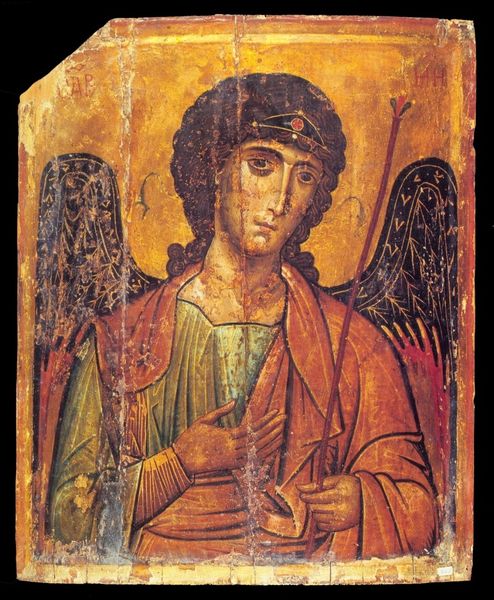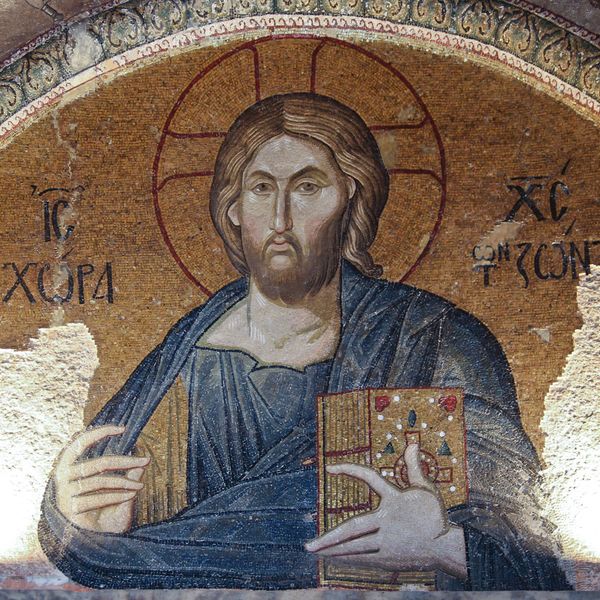
tempera, painting
#
portrait
#
byzantine-art
#
medieval
#
tempera
#
painting
#
oil painting
#
history-painting
Dimensions: 44.5 x 37 cm
Copyright: Orthodox Icons,Fair Use
Curator: Looking at “Savior the Almighty,” an icon rendered around 1219, one can immediately perceive its deep historical roots and devotional purpose. The icon resides in the Yaroslavl Museum of Fine Arts, a key site for understanding the Orthodox tradition. Editor: It's remarkably austere, isn't it? The colors feel intentionally muted, and you can almost sense the layers of tempera built up over time. I am struck by its very tactile presence and surface qualities, like looking at something that has lived, labored through. Curator: Precisely. The icon is not merely an aesthetic object but a conduit. The image carries significant theological weight, functioning within a structured religious context that impacts society’s cultural expressions. Editor: Right, but consider the act of making—the craft. Someone meticulously grinding pigments, applying them layer by layer to create that specific texture. It tells of repetitive labor and a devotional aspect deeply intertwined with the material processes themselves. Curator: And we can't divorce that materiality from the politics. Religious icons wielded enormous power. Their creation and dissemination were overseen, shaping visual culture and controlling religious expression during the Medieval era. Editor: True, and let's not overlook the frame itself. The damage to the wood shows wear; evidence of handling, display, perhaps even pilgrimage. These physical interactions and how people used the artwork are important considerations, as are the social circumstances of workshops that made them. It’s a story of faith made tangible. Curator: That brings us to today—the very act of displaying "Savior the Almighty" within a modern museum context raises key questions about art's function. How does shifting the religious icon from devotional setting into gallery impact its understanding? Editor: It's a jarring shift but inevitable. Examining it outside its original religious environment lets us look closer at the art, craft and production in relative neutrality – without the pressure to see a sacred object alone, though for many viewers it clearly still resonates on that level. Curator: Agreed. Reflecting upon “Savior the Almighty,” reveals to us not just a picture, but complex threads intertwining art, religion and its wider socio-political significance across centuries. Editor: It’s this tangible presence—the palpable sense of history embedded within the materials themselves—that helps us reconsider artistic, cultural production as fundamentally connected to everyday life and labor, far beyond simple acts of looking.
Comments
No comments
Be the first to comment and join the conversation on the ultimate creative platform.
